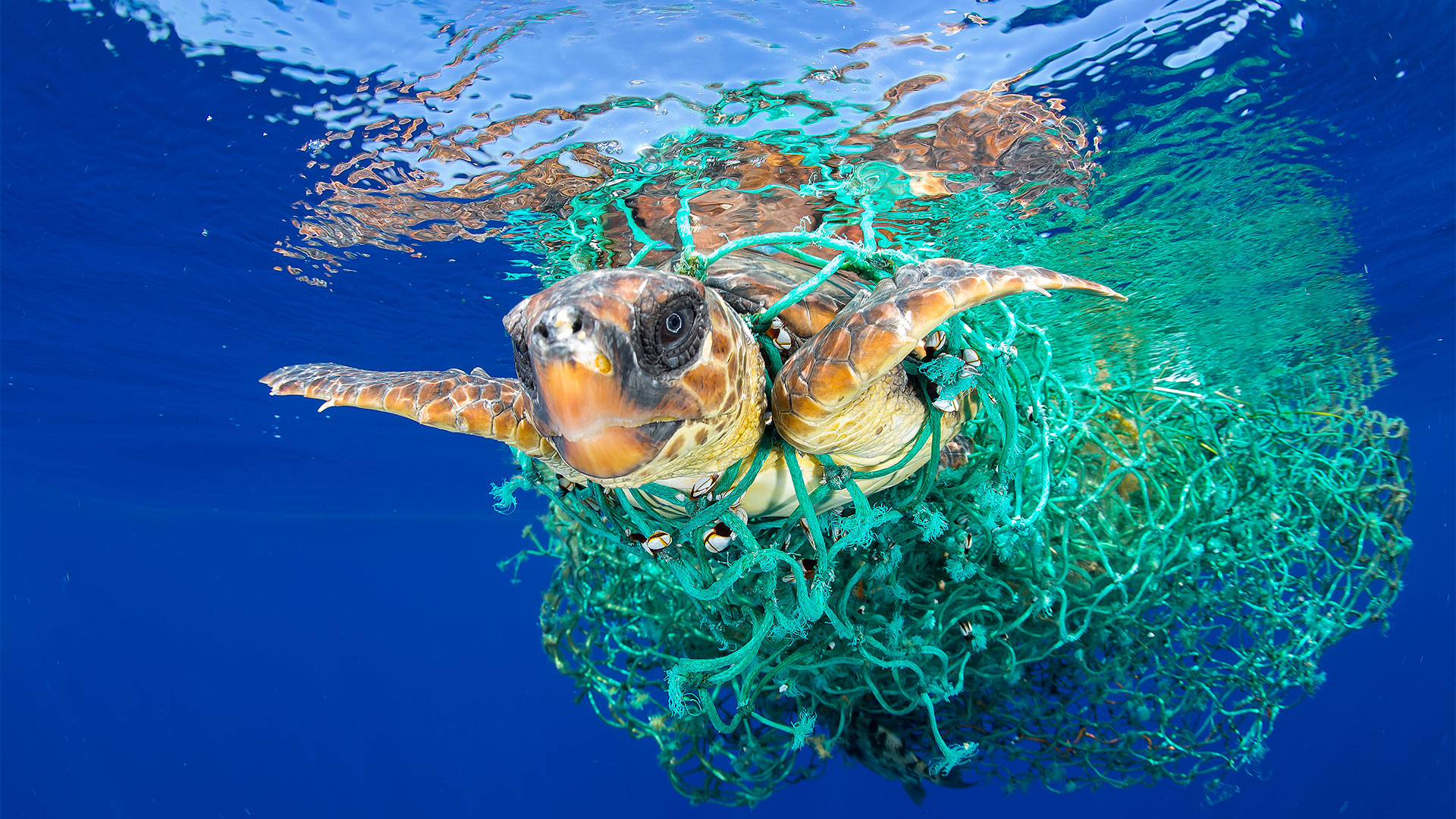 background
background
Protection of the world’s oceans Hope for the “Blue Economy”
As of: 06/08/2021 12:59 p.m.
The seas are at risk from climate change, pollution and overfishing. But gradually a rethink is also beginning in the economy – the protection of the oceans is recognized as a business. From Notker Blechner, tagesschau.de Sometimes an accident can lead to a complete change in life. For example with Emily Penn. The architect and passionate sailor had her aha experience on a boat trip from Great Britain to Australia. “One night all the passengers woke up to a loud bang,” she says. “Our ship had rammed a plastic mountain – in the middle of the ocean, away from any civilization.” Since then, Penn has been committed to protecting the oceans, giving lectures, organizing events and doing research expeditions to find solutions to the fight against the plastic flood in the oceans. Penn is known as the “advocate for the seas”.
Shoes, sunglasses and backpacks made from ocean trash
The marine activist is encouraged by increasing business initiatives against plastic waste pollution in the oceans. Several companies and start-ups have developed methods of making new products from marine litter. Adidas offers shoes and jerseys made from recycled “ocean plastic”. Other manufacturers are making new sunglasses, backpacks and skateboards out of marine plastic waste. Even the Dutchman Boyen Slat, founder of the start-up “Ocean Cleanup”, now sells sunglasses with frames made from recycled ocean plastic. “Ocean Cleanup” collects plastic waste on the open sea with ships. The Italian Giulio Bonazzi has managed to make a special fiber – Econyl – from old fishing nets, which is used for tights and bikinis. Bonazzi calculates that every ton of Econyl saves six tons of carbon dioxide.
Marketing gimmick?
Environmentalists warn against being misled. Products made from ocean plastic are often a marketing gimmick and misleading. In some of them there is hardly any plastic waste from the oceans, according to the WWF. Nevertheless: The fight against the mountains of plastic has now begun in business and politics. The G20 states have announced that they will ban plastic waste from the world’s oceans by 2050. It is currently estimated that around 13 million tons of plastic waste end up in the oceans every year.
14 coastal countries are leading the way in marine protection
The pictures of polluted beaches after tankers leaked like now back in Sri Lanka show how important global marine protection is. A total of 14 countries, including Australia, Canada, Japan, Indonesia, Mexico and Norway, have come together in a kind of “Ocean Panel” and have committed to sustainably managing their national waters in the future. “For too long we have made the wrong choice between marine protection and production,” admits Norway’s Prime Minister Erna Solberg, co-head of the Ocean Panel.
 Danger to the species: A sea turtle that has become entangled in a drifting net. Image: picture alliance / AP Photo According to a study that was published in the journal “Nature” at the end of March, hundreds of millions of CO2 could be saved through marine protection. So far, not even three percent of the world’s oceans have been strictly protected. The study’s authors see the greatest potential in restricting bottom trawling. This controversial fishing method involves ships pulling a net across the ocean floor. The living beings on the ground are destroyed, plants are uprooted and spawning grounds for fish are destroyed. In addition, the agitation of the seabed releases organic carbon compounds and converts them into climate-damaging CO2.
Danger to the species: A sea turtle that has become entangled in a drifting net. Image: picture alliance / AP Photo According to a study that was published in the journal “Nature” at the end of March, hundreds of millions of CO2 could be saved through marine protection. So far, not even three percent of the world’s oceans have been strictly protected. The study’s authors see the greatest potential in restricting bottom trawling. This controversial fishing method involves ships pulling a net across the ocean floor. The living beings on the ground are destroyed, plants are uprooted and spawning grounds for fish are destroyed. In addition, the agitation of the seabed releases organic carbon compounds and converts them into climate-damaging CO2.
Great potential for CO2 savings
The Ocean Panel has proposed several measures to promote marine and climate protection: In addition to carbon storage in the seabed, the panel recommends sustainable fishing and aquaculture, the expansion of offshore energy in the sea and ocean-compatible transport. According to calculations, this could reduce carbon dioxide emissions by a fifth, trigger investments of over 15 trillion dollars and create 12 million new jobs. Indeed, there is a gradual rethinking of the maritime economy. The International Maritime Organization has mandated stricter sulfur emissions values in 2020. Instead of using heavy fuel oil, the ships now have to run on marine diesel. The only exception: ships with so-called scrubber exhaust gas cleaning systems are still allowed to use heavy fuel oil. Over 350 container and cruise ships as well as tankers have switched to liquefied natural gas (LNG). LNG contains no sulfur, hardly any nitrogen oxides and 20 percent less CO2. However, the greenhouse gas methane allegedly escapes. “The liquefied natural gas turns out to be a harmful wrong path,” says Nabu in the meantime. Shore power systems have been put into operation in Rostock-Warnemünde and Hamburg so that cruise ships do not need the ship’s diesel for power supply while they are in port.
“Blue Economy” becomes a billion dollar business
Investors such as the DWS fund company from Deutsche Bank have long been interested in the “blue economy”. According to the WWF, the ocean’s annual “gross sea product” is $ 2.5 trillion. This would make the “blue economy” the eighth largest economy in the world. DWS fund manager Paul Buchwitz predicts that the “blue economy” will grow twice as fast as the established economy by 2030. The “blue economy” includes companies that help to reduce marine pollution and curb ocean acidification – as well as those that deal with the sustainable use of marine resources, ecosystems and sustainable fisheries.





























































You must log in to post a comment.